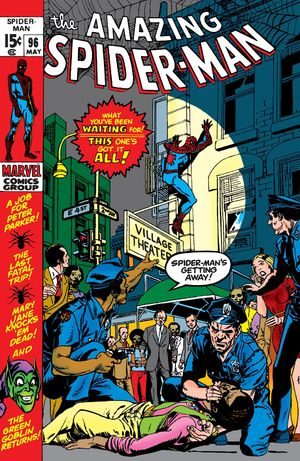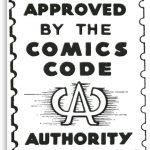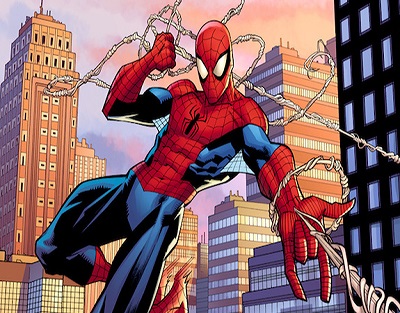
So I allowed you some time to consider what is wrong with The Amazing Spider-Man #96. To know the answer you would have to be familiar with how comic books were regulated at the time. Let us take a trip in Doctor Emmett Brown’s time traveling Dolorean to November 5, 1955. Wait, that was when Doc Brown invented the flux capacitor. Let’s try again.
Make that September 1954. At that time, The Comics Magazine Association of America (CMAA) was formed in response to a widespread public concern over gory and horrific comic-book content. The main reason for this decision was because of the Senate Subcommittee on Juvenile Delinquency hearings in 1954, which focused specifically on comic books ( Didn’t these people have something better to do?) Charles F. Murphy, a specialist in juvenile delinquency, was appointed to head the organization and to help devise a self-policing “code of ethics and standards” for the industry.
 The governments sudden interest in comic books had many publishers concerned about government regulation, prompting them to form a self-regulatory body instead. Thus the Comics Code Authority (CCA) was created. With this in place, comic book publishers now had to pass all proposed stories through CCA to see if it met their standard for print. If it passed, they could put the CCA seal on their cover and publish their book. If not, they were not allowed to print without editing their content or starting again from scratch. Not the best atmosphere for a creative endeavor, but better they thought than having the “Man” standing over their shoulder.
The governments sudden interest in comic books had many publishers concerned about government regulation, prompting them to form a self-regulatory body instead. Thus the Comics Code Authority (CCA) was created. With this in place, comic book publishers now had to pass all proposed stories through CCA to see if it met their standard for print. If it passed, they could put the CCA seal on their cover and publish their book. If not, they were not allowed to print without editing their content or starting again from scratch. Not the best atmosphere for a creative endeavor, but better they thought than having the “Man” standing over their shoulder.
Ok, let’s get back in the car , but not before we drop a banana peel and a half full beer can into Mr.Fusion. Why only a half-full beer can? I could drink the WHOLE thing… I am driving after all. So let’s go to 1971.
Around this time, the United States Department of Health, Education and Welfare approached Marvel Comics Editor-in-Chief Stan Lee to do a story about drug abuse. Lee agreed and wrote a three-part Amazing Spider-Man story, portraying drug use as dangerous and unglamorous. You guessed it, Amazing Spider-Man issues 96, 97, and 98. Stan was proud of the story and never thought there would be a problem publishing it. After all, the GOVERMENT made him do it! So they submit it for review from the CCA. Ruh-ROH, it seems the Comics Code Authority didn’t get the memo that the government requested this story. It also doesn’t help that they main person who normally makes these decisions for the CCA is on vacation (or wherever he went) so the acting administrator looked the story over, went by the book and said NO. Lee argued that since the government has asked him to write this, they should follow through regardless. So with the support of his publisher, Martin Goodman, he went ahead and published WITHOUT the CCA seal. The comic proved to be popular with readers and eventually facilitated the loosening of restrictions about depicting drugs and drug use. You basically had to reply like Arnold Schwarzenegger in True Lies if someone asks, “Were there drugs there? Arnold: “Yes, but they were all bad.”
By 2011 Comic Book companies were using their own comic rating systems which greatly made the use of the CCA seal obsolete. So there you have it, the tale of how “The Man” beat “The Man” and all for the lack of a seal.

Senior Writer at GeekVibesNation – I am a 50 something child of the 70’s who admits to being a Star Trek/Star Wars/Comic Book junkie who once dove head first over a cliff (Ok, it was a small hill) to try to rescue his Fantastic Four comic from a watery grave. I am married to a lovely woman who is as crazy as I am and the proud parent of a 18 year old boy with autism. My wife and son are my real heroes.







